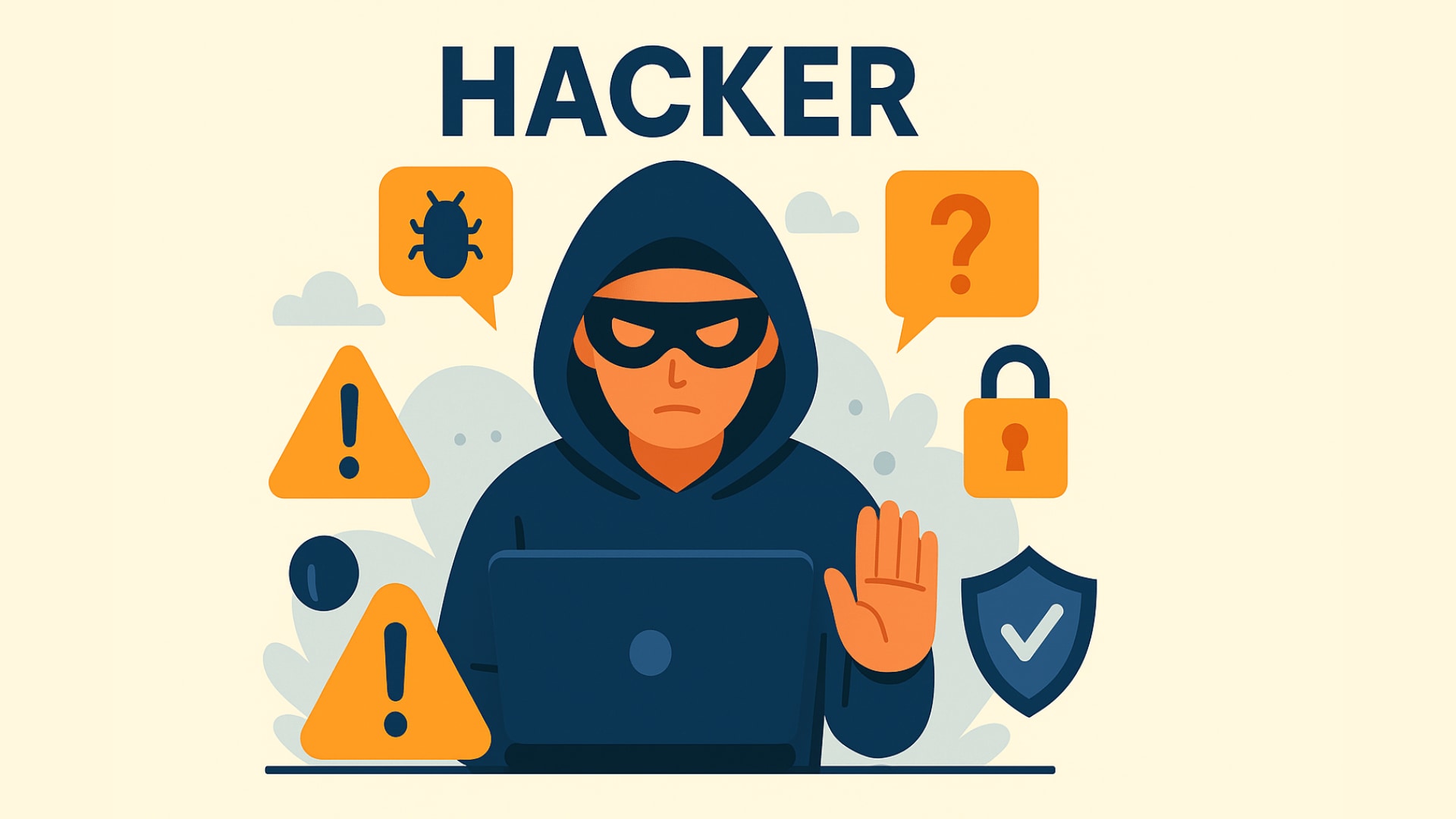
The word “hacker” has become a household term, yet it remains one of the most misunderstood in the tech world. For many, it evokes dramatic imagery: someone hunched over a keyboard, hood up, lines of code racing across a screen as they break into a secure network. This portrayal, though popular in movies and news headlines, oversimplifies and distorts the reality of hacking. In truth, hacking is not inherently malicious. At its core, a hacker actively applies deep technical skills to manipulate or explore systems beyond their intended use. In doing so, hackers often uncover hidden capabilities or expose vulnerabilities that others might overlook.
But, most people associate hacking with illegal activity, data breaches, and cybercrime. Understanding the full spectrum of what a hacker is, what they do, and why it matters is vital for anyone who operates online — whether you’re a business owner, developer, IT manager, or simply a digital citizen. Let’s unravel the complexity of hacking and examine the motivations, methods, and implications of hackers in the modern digital ecosystem.
Table of contents
- The Essence of Hacking: Curiosity and Capability
- White, Black, and Grey: The Spectrum of Hackers
- What Do Hackers Actually Do?
- Techniques and Tools
- Why Hackers Hack: Motivations Behind the Activity
- The Impact of Hacking: Real-World Consequences
- Defending Against Hackers: Proactive Cybersecurity
- Conclusion
- FAQ – Frequently Asked Questions
The Essence of Hacking: Curiosity and Capability
Hacking, at its heart, stems from curiosity. It involves exploring the boundaries of technology, often in innovative and unconventional ways. This exploration can lead to beneficial outcomes — like discovering a software bug that could be exploited by cybercriminals and reporting it before harm is done. It can also veer into destructive territory, such as gaining unauthorized access to data, systems, or networks for personal gain or sabotage.
This duality plays a critical role in understanding hackers. Their intent, not their tools or techniques, defines who they are. The same skills that allow them to secure systems can just as easily be used to exploit them. To reflect this distinction, the cybersecurity community often classifies hackers using metaphorical hat colors that signal their ethical stance and legality.
White, Black, and Grey: The Spectrum of Hackers
In the cybersecurity community, hackers are typically categorized by color-coded “hats” based on their ethical alignment.
- White Hat Hackers operate within the law and use their skills for ethical purposes. They are the good actors of the cybersecurity world, helping organisations identify and fix security vulnerabilities. Companies often hire white hats to conduct penetration testing or security audits.
- Black Hat Hackers are the opposite. Their actions are illegal and harmful. They exploit vulnerabilities for financial gain, political agendas, or simple notoriety. From ransomware attacks to identity theft, black hats are responsible for much of the cybercrime seen today.
- Grey Hat Hackers blur the lines. They might break into systems without permission, but not necessarily with malicious intent. Some grey hats reveal vulnerabilities to the public or the affected organisation, sometimes expecting a reward, but their actions still often violate legal boundaries.
Other hacker archetypes exist as well: hacktivists, who carry out politically motivated attacks; script kiddies, less-skilled users who rely on pre-made tools; and red teams, who simulate real-world attacks to test an organisation’s defences.
What Do Hackers Actually Do?
The work of a hacker is far more intricate than pressing a few buttons to breach a firewall. Professional hackers follow a structured approach, much like cybersecurity professionals, and their activities often begin with reconnaissance — gathering information about a target through publicly available sources like social media, domain records, and metadata. This phase helps identify weak points, such as exposed software versions or employee emails.
After gathering initial data, the hacker actively scans for vulnerabilities by probing systems for outdated patches, open ports, misconfigurations, or weak credentials. They often use tools like Nmap, Wireshark, or Metasploit to uncover exploitable flaws.
If vulnerabilities are found, the next step is exploitation. This may involve writing custom code or using existing exploits to bypass security mechanisms and gain entry. A successful exploit can escalate the hacker’s access privileges, granting administrative control over systems and sensitive data.
The final stages include maintaining access, often by installing malware like backdoors or rootkits, and covering tracks to avoid detection. More advanced hackers may pivot through interconnected systems, expanding their reach across a network. The process is methodical, often silent, and can go unnoticed for extended periods.
Techniques and Tools
Hackers use a wide range of techniques, blending social engineering, software exploitation, and network manipulation to achieve their goals. Social engineering tactics like phishing emails are commonly used to deceive users into revealing sensitive information or clicking malicious links. These attacks often mimic trusted sources to appear legitimate, making them particularly effective.
Once a user has taken the bait, malware is often deployed to infiltrate the system. This can take the form of Trojans, ransomware, or keyloggers, each designed to steal information, disrupt operations, or lock users out of their own data. Web applications are also frequent targets. Hackers exploit flaws such as SQL injection or cross-site scripting to manipulate backend databases or hijack user sessions.
Attackers frequently initiate brute-force attacks by systematically guessing usernames and passwords until they successfully access an account. Additionally, they often launch denial-of-service attacks to overwhelm websites or networks with excessive traffic, ultimately blocking legitimate users and rendering services inaccessible. These aggressive tactics disrupt normal operations and serve as a reminder of the persistent nature of cyber threats.
These techniques are not static. As cybersecurity defences evolve, so too do the methods hackers employ, making it a constantly shifting battlefield.
Why Hackers Hack: Motivations Behind the Activity
The motivations that drive hackers vary widely, and understanding these can offer insights into their methods and targets. Financial gain is perhaps the most common driver. Many hackers seek out vulnerabilities to steal credit card information, deploy ransomware, or execute fraud. The financial incentives are high, especially when attacks target large corporations or critical infrastructure.
However, not all hackers are motivated by money. Some are driven by ideology or political causes, engaging in hacktivism to protest or bring attention to social issues. Others work in the shadows of corporate or state-sponsored espionage, stealing intellectual property or classified data to gain strategic advantages.
Others hack for the thrill or challenge, driven by the excitement of overcoming digital barriers and earning recognition within their communities. Many start as curious learners, eager to understand how systems function and eager to build technical mastery. Some pursue notoriety, while others deliberately test their skills against sophisticated defences to push their limits and prove their capabilities.
The Impact of Hacking: Real-World Consequences
The effects of hacking can be devastating. For individuals, it may mean identity theft, drained bank accounts, or personal data exposure. For businesses, a data breach can lead to financial losses, reputational damage, regulatory fines, and loss of customer trust.
Major incidents like the Equifax breach or the SolarWinds supply chain attack underscore the scale and severity of modern cyberattacks. These aren’t isolated events but part of an ongoing battle between defenders and adversaries in cyberspace.
Defending Against Hackers: Proactive Cybersecurity
Staying protected in an age of digital threats requires a comprehensive and proactive approach to cybersecurity. At the most basic level, users and organisations must ensure that all software and operating systems are regularly updated. This simple step closes many of the known vulnerabilities that hackers often exploit.
Strong, unique passwords across different accounts play a vital role in safeguarding digital assets. Pairing them with multi-factor authentication adds another protective barrier, making unauthorized access significantly harder even if a password is compromised. Antivirus software and firewalls continuously monitor systems and block malware in real time. Meanwhile, users who stay informed and alert—able to spot phishing attempts and avoid suspicious links — serve as an essential frontline defense in cybersecurity.
Educating employees and users about safe online behavior helps prevent many common attacks. Training should cover how to recognize deceptive communications, avoid risky downloads, and report suspicious activity promptly. For those managing online platforms, integrating tools like CAPTCHA — such as the GDPR-compliant solutions from captcha.eu — can effectively prevent bot-driven attacks. These systems distinguish between real human users and automated threats, helping to protect login forms, registration pages, and transaction portals from fraudulent activity.
Security, ultimately, is a shared responsibility. Technical defences must be paired with informed, vigilant human behavior to build a resilient cybersecurity posture.
Conclusion
Hackers represent more than just villains or heroes — they embody the creativity and complexity of digital ingenuity. Their actions, whether aimed at securing systems or sabotaging them, highlight both the promise and risk of modern technology. As cyber threats grow more sophisticated, we must continually advance our understanding and strengthen our defenses to stay ahead.
By recognising the diverse nature of hackers and investing in strong, layered cybersecurity measures, we can protect our systems, our data, and our digital identities. At captcha.eu, we are committed to supporting businesses and users with smart, privacy-respecting technologies that help maintain a secure and trusted online experience for everyone.
FAQ – Frequently Asked Questions
What is a hacker in simple terms?
A hacker is someone who uses their technical skills to manipulate or explore computer systems, networks, or software. While some hackers aim to help improve security, others exploit systems for malicious purposes such as stealing data or disrupting services.
Are all hackers criminals?
No, not all hackers are criminals. Hackers are often categorized by intent:
White hat hackers work legally to improve security.
Black hat hackers exploit systems illegally.
Grey hat hackers operate in a legal grey area—sometimes without permission, but not always with malicious intent.
What do hackers do exactly?
Hackers might test systems for weaknesses, create or use malware, exploit security flaws, steal data, or gain unauthorized access to networks. Their actions can be used to help organizations strengthen defenses or to carry out attacks.
How can I protect myself from hackers?
To protect yourself:
– Use strong, unique passwords.
– Enable two-factor authentication.
– Keep your software updated.
– Avoid clicking suspicious links or attachments.
– Install reputable antivirus software.
– Use CAPTCHA tools to defend against bots on your website.
What are common signs that you’ve been hacked?
Unusual activity such as unauthorized logins, missing or corrupted files, strange pop-ups, or account lockouts can be signs of a hack. Prompt action, like changing passwords and scanning for malware, is critical.
100 free requests
You have the opportunity to test and try our product with 100 free requests.
If you have any questions
Contact us
Our support team is available to assist you.




